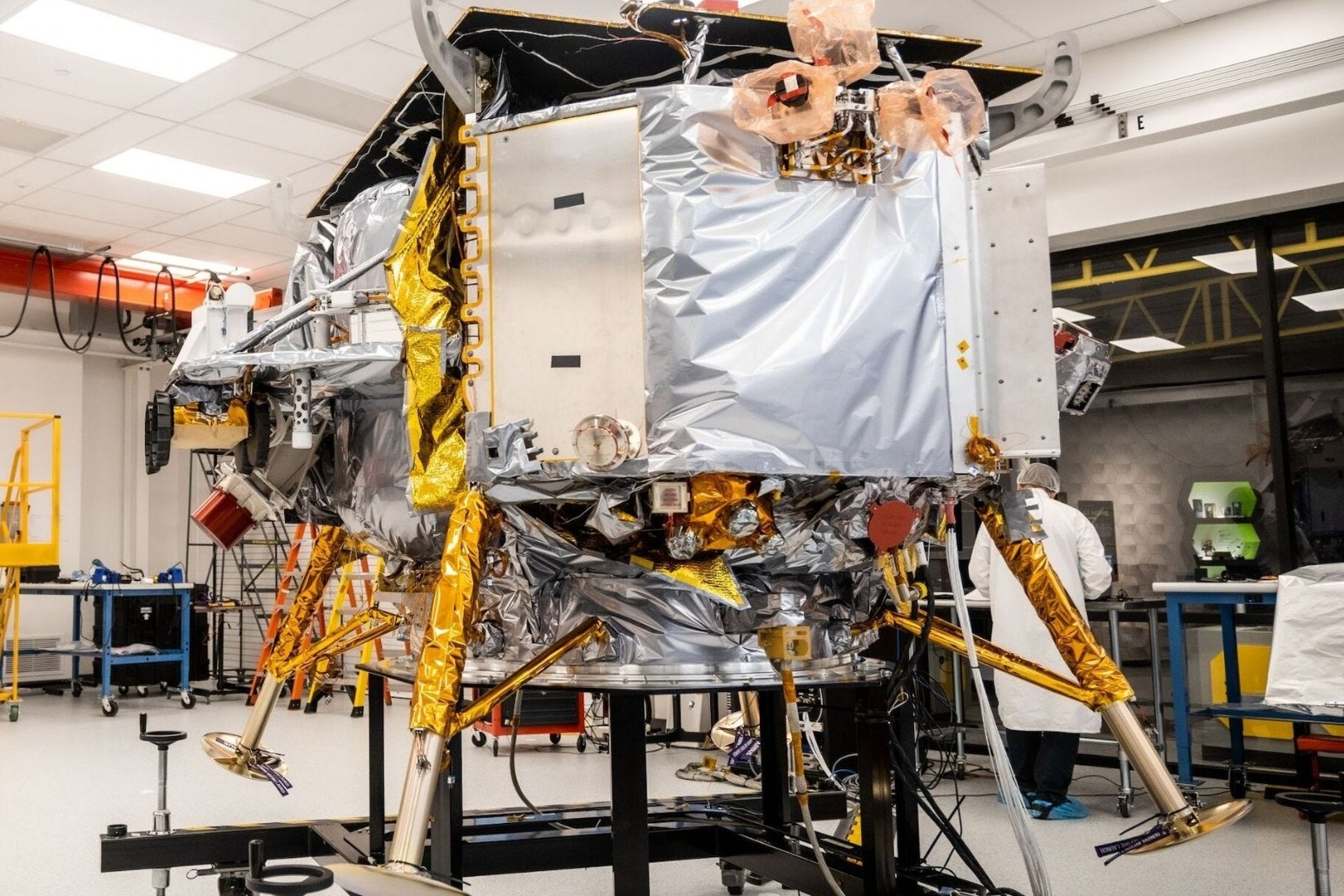-
 play_arrow
play_arrow
Kl 1 Radio Local radio for west Norfolk
-
 play_arrow
play_arrow
KL DISCO KL Disco Playing Disco Music from the 70's onwards.24/7
-
 play_arrow
play_arrow
KL COUNTRY KL COUNTRY Playing New and Classic Country Music 24/7
-
 play_arrow
play_arrow
KL ROX KL ROX The best of New and Classic Rock.24/7
-
 play_arrow
play_arrow
KL SUMMER Summer Vibes 24/7 from KL1 Radio across West Norfolk
-
 play_arrow
play_arrow
KL CLASSICAL Your Symphony Starts Here
-
 play_arrow
play_arrow
KL CHILL Just Chill!
-
 play_arrow
play_arrow
KL POP The Best POP Hits all day Long!
-
 play_arrow
play_arrow
KL XTRA KL XTRA
music_note

A private spacecraft carrying an instrument built by UK scientists is due to make history as it begins its journey to the moon.
Built by US space company Astrobiotic, the Peregrine Mission One (PM1) is set to become the first private probe to land on the lunar surface.
It is also slated to be one of the first US moon landings since the final mission of the Apollo programme – Apollo 17 – more than 50 years ago.
Onboard will be an instrument known as the Peregrine Ion Trap Mass Spectrometer (PITMS), which was developed in the UK by scientists from The Open University (OU) and the Science Technology Facilities Council (STFC) RAL Space – the UK’s national space lab.
The device will analyse the thin lunar atmosphere as well as find out more about how water might be moving around the moon.
For many years, scientists believed the moon was bone dry and any water detected in the samples from Apollo missions were thought to be contamination from Earth.
However, more recent missions have revealed the presence of water and, in 2020, Nasa confirmed the presence of water molecules in sunlit areas of the moon.
Dr Simeon Barber, of The Open University, said: “Various new data in the last decade has overturned the Apollo-era notion of the moon as a bone-dry place.
“We have seen hints of ice at the cold lunar poles, and suggestions of water (or the related hydroxyl molecule) globally, as well as new analyses of Apollo samples showing small pockets of water within the lunar rock itself.”
Understanding the lunar water cycle is crucial for future exploration of the moon.
Water is a key resource for sustaining human presence on the moon – providing drinking water as well as supporting various industrial processes.
Dr Barber added: “We are interested in how these water molecules travel through the lunar exosphere (atmosphere) under the influence of day-night temperature cycles, eventually reaching the super cold polar regions where they accumulate slowly as frost or ice layers.
“This transport through the exosphere is the link connecting the various sources of water, and their eventual fate locked up in polar cold traps.
“PITMS will measure the composition and density of the lunar exosphere through the lunar day, allowing us to deduce the processes at play on the moon today, and by extension, throughout the moon’s history and on other similar planetary bodies.”
The launch window for the Peregrine lander opens on January 8 at 7.18am UK time.
The spacecraft will blast off aboard a Vulcan Centaur rocket, built by US aerospace manufacturer United Launch Alliance, from Cape Canaveral in Florida.
It is part of Nasa’s Commercial Lunar Payload Services initiative, which aims to involve commercial companies in the exploration of the moon.
The initiative, meanwhile, is part of Nasa’s broader Artemis programme, which plans to return humans to the moon.
Libby Jackson, head of space exploration at the UK Space Agency – which provided £14 million in funding to develop the instrument through its European Space Agency membership, said: “The Peregrine lunar lander will help pave the way for further exploration of our solar system.
“Witnessing the first instrument from the UK, and indeed Europe, launch to the moon is a hugely exciting moment.
“We are looking forward to seeing Peregrine safely on the surface and the return of important data from PITMS to help unlock the secrets of water on the moon.
“It’s fantastic to see our skilled UK experts at the heart of an international mission that will support future long-term presence in space.”
Chris Howe, production and software group leader at STFC RAL Space, said: “The utilisation of the moon’s water could prove vital for future human endeavours in space, so we’re incredibly proud to have had the opportunity to help develop PITMS and are delighted to see it safely on its way.”
Assuming it launches on January 8, officials say the spacecraft could attempt a lunar landing on February 23.
Its destination is an area in the Gruithuisen Domes, a series of volcanic domes named after the German astronomer Franz von Gruithuisen.
Once it’s on the surface, the Peregrine lander is designed to operate for roughly two weeks – or one lunar day.
Mr Howe said: “The technology from PITMS will now help underpin future missions, such as the Rosalind Franklin Rover, so whilst PITMS will only operate for one lunar day on the moon, its legacy will be felt for years.”
Science and Technology Secretary Michelle Donelan said: “The upcoming launch of the Peregrine Lunar Lander reflects the unwavering dedication of our brilliant British scientists, working hand-in-hand with international partners.
“The first British science instrument set to touch the lunar surface will mark a pivotal moment for the UK space industry, and the beginning of an exciting journey in understanding how we can sustain a prolonged human presence on the moon.”
Published: by Radio NewsHub

Similar posts
Upcoming shows

Darren Furzey – Classic Hit Weekend
1:00 pm - 3:00 pm

John Atkins – Sunday 60’s and 70’s
3:00 pm - 6:00 pm

Frank Hopping – Real Music Society
6:00 pm - 8:00 pm

Mike Bentley – The Theatre Show
8:00 pm - 10:00 pm

Jonathan Charles – Vinyl Countdown
10:00 pm - 11:00 pm
-

From food to footie: Tackle the ultimate England quiz

NHS boards pay 227m compensation in five years figures suggest

Number of modern languages teachers down by more than a fifth figures suggest

Free breakfast clubs to open at 750 schools as teachers voice funding fears

49-year-old threatened to put his penis in train station staff member’s mouth
Message Us
Copyright The Mediasite UK - 2025



